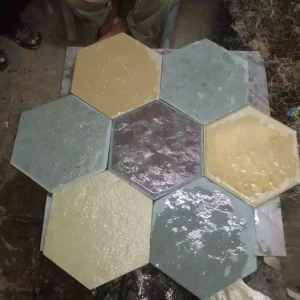Is Kota Stone Cheaper Than Tiles?
When homeowners or business entities plan to design or renovate their flooring, one of the primary decisions revolves around the choice of flooring material. Kota stone and tiles are two popular options in this arena. One of the frequently asked questions is whether Kota stone is cheaper than tiles. Here, we delve deep into this topic, comparing the costs and other vital aspects of both materials.
1. What is Kota Stone?
Originating from Kota, a city in Rajasthan, India, Kota stone is a type of fine-grained limestone that comes in greenish-blue and brown shades. It is widely used for flooring purposes due to its durability, slip resistance, and aesthetic appeal.
2. Understanding Tiles
Tiles are a broad category encompassing a range of materials like ceramic, porcelain, vitrified, and more. Their price varies according to the type, design, brand, and quality. Tiles are known for their easy maintenance, vast design variety, and versatility in application.
3. Cost Comparison
Kota Stone: Generally, Kota stone is considered economical in its raw form. The basic variety of Kota stone might start from as low as INR 40 to 50 per square foot (prices may vary depending on the region and quality). However, the final cost can increase once finishing, polishing, and other treatments are factored in. Moreover, there might be additional expenses in transportation, especially if it’s being used outside Rajasthan.
Tiles: The price range for tiles is vast. Basic ceramic tiles can start from INR 40 per square foot and can go up to INR 300 or more for high-end porcelain or designer tiles.
At face value, basic variants of both Kota stone and tiles might seem similar in cost. However, tiles often come pre-finished, whereas Kota stone usually requires additional finishing after installation.
4. Other Factors to Consider
Durability: Kota stone, being a natural stone, has a long lifespan and can endure heavy footfall, making it suitable for commercial establishments. On the other hand, high-quality tiles also offer good durability, but they might chip or crack under heavy impact.
Maintenance: Tiles generally demand less maintenance, are easier to clean, and resist stains well. Kota stone, after polishing, offers a smooth surface but might require re-polishing after a few years.
Aesthetics: While tiles offer a broader range in terms of patterns, colors, and designs, Kota stone provides a natural, rich, and unique look. The choice here largely depends on individual preferences and the ambiance one wishes to create.
Environmental Impact: Kota stone is a natural material, while tiles undergo a manufacturing process. If one is leaning towards eco-friendly materials, Kota stone has a smaller carbon footprint compared to the industrial production of tiles.
Conclusion
To determine whether Kota stone is cheaper than tiles, one cannot simply look at the base price. It’s essential to factor in installation, finishing, lifespan, and maintenance costs. While the initial prices of basic variants might be similar, the total cost of ownership might vary based on the above factors.
When choosing between Kota stone and tiles, consider not only the price but also the purpose, aesthetic preferences, and long-term benefits. Whatever your decision, ensure it aligns with your requirements and the ambiance you envision for your space.

